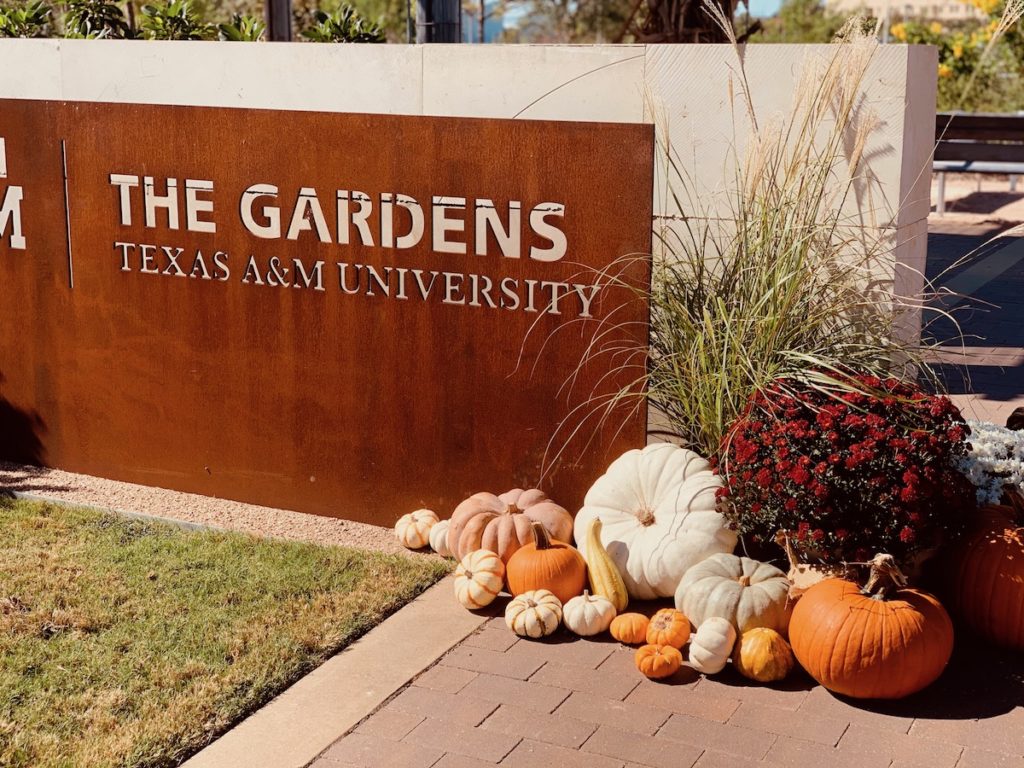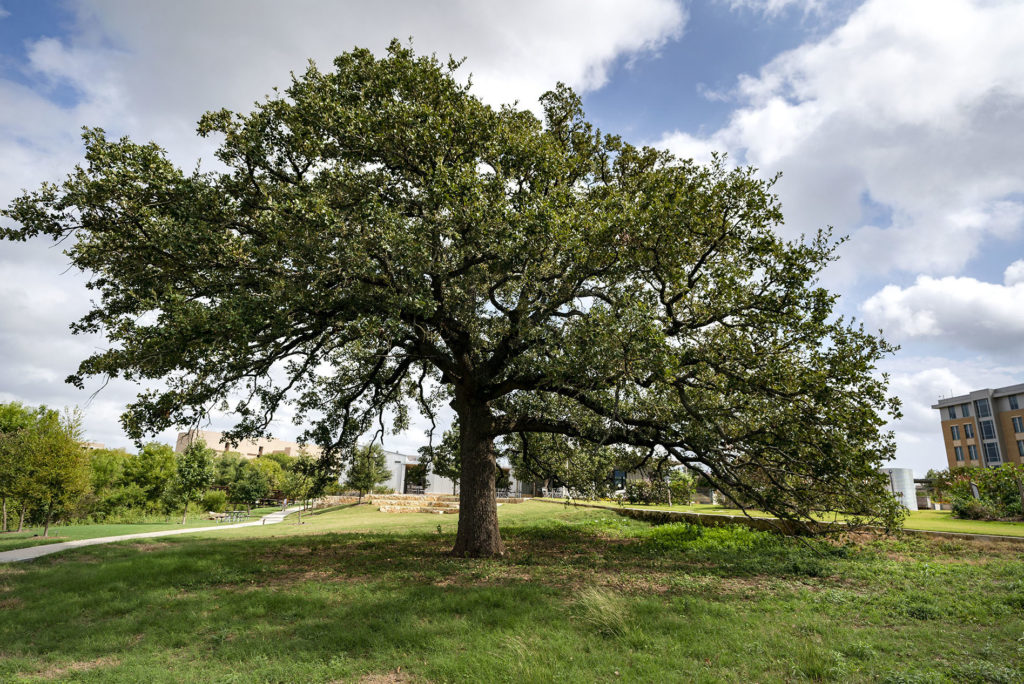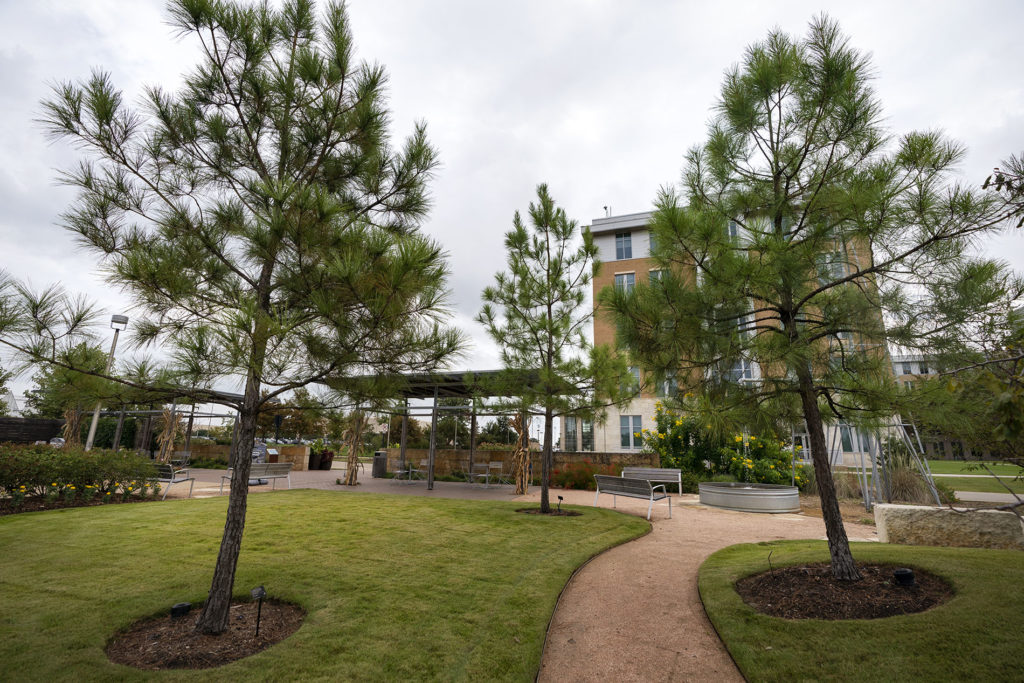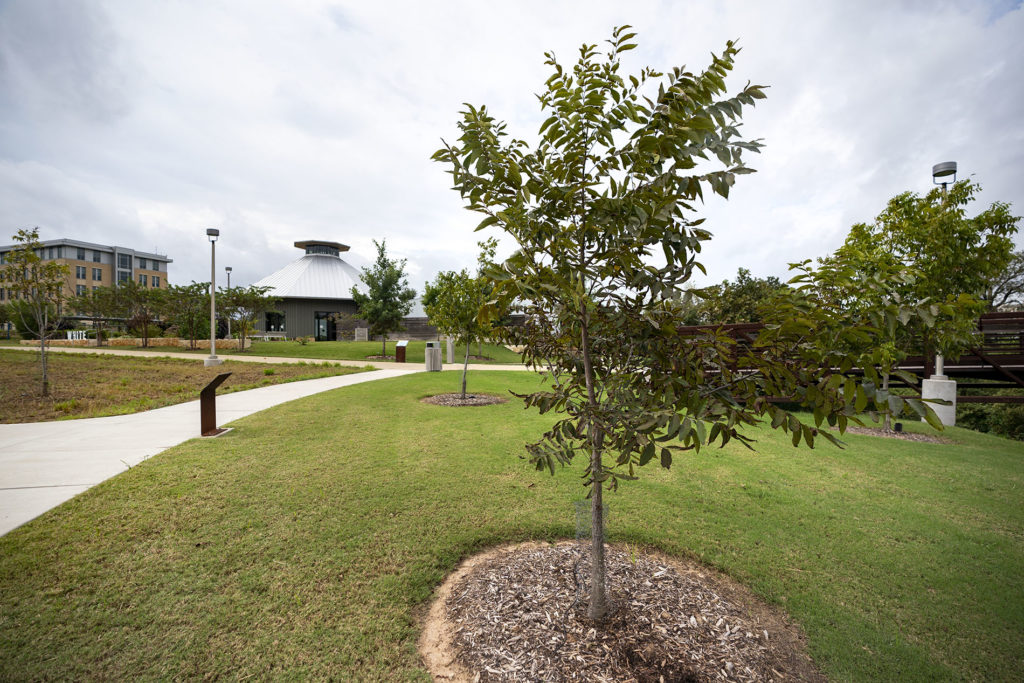Growing history at The Gardens at Texas A&M
Historic trees provide links to past, present, future
The Gardens at Texas A&M University is home to several trees of historic, commemorative or horticultural significance.
“We’re fortunate to have several trees with links to past events or historical developments,” said Michael Arnold, Ph.D., director of The Gardens and professor of landscape horticulture in the Texas A&M Department of Horticultural Sciences. “And that’s unusual for a young garden like ours, just over 3 years old. Some have come to us as young plants grown from historic predecessors.”
Living legacies
Arnold said these historic trees enrich the teaching, research and extension mission of The Gardens. Students and visitors have a tangible link to history while learning about conservation, plant identification and the physiology and genetics of the plants. They also can serve as a repository for genetic materials that might be useful for reforestation or habitat restoration.
“They not only tell the story of our heritage; they are adaptable to grow in our area,” said Joseph Johnson, program manager for The Gardens. “Plus, they are beautiful trees. Their foliage, textures and colors make great choices for landscapes.”
Trees with a story
The Gardens is a living classroom and sanctuary for students, faculty and the community to discover the natural world. While there, visitors can find the following trees with a unique past:
Ol’ Sarge
- Garden location: Landmark Nurseries Tree Park
- Common name: Post oak
A legacy from the post oak savanna in Brazos County and estimated to be more than 200 years old, Ol’ Sarge was about 60 years old when Texas A&M was founded in 1876. It is the largest known post oak in Brazos County. Because of its historical significance, the tree was preserved during the site development and building of The Gardens.
El Árbol del Tule
- Garden location: Mexican Heritage Garden
- Common name: Montezuma cypress
A seedling of the El Árbol del Tule Montezuma cypress in Oaxaca, Mexico, now grows in The Gardens’ Mexican Heritage Garden. Legend says the original tree was planted 1,400 years ago. In 2005, its circumference was 137 feet, making it the widest tree in the world. The Montezuma cypress in The Gardens is growing well. Unlike its local cousin, the bald cypress, it tolerates the drier, higher pH soils in built environments and tends not to develop “knees,” pneumatophores.
Bastrop Lost Pine
- Garden location: German and Czech Heritage Garden
- Common name: Loblolly pine
In ancient times, the loblolly pines in the Lost Pines eco-region in Bastrop County were separated by 100 miles from the loblolly pine forests in East Texas. Over time, the Bastrop pines became more drought tolerant. Because the Texas A&M Forest Service Western Gulf Forest Tree Improvement Program had cultivated seeds from the Bastrop pines, after a wildfire destroyed part of the Lost Pines forest in 2011, the area was reforested with seedlings with the same genetic characteristics.
La Bahia Pecan
- Garden location: Morris and Lydia Norman Pecan Bottom
- Common name: Pecan
A pecan tree in The Gardens is a descendant of the La Bahia Pecan Tree in the Washington-on-the-Brazos State Historic Site. The parent tree was present at many events regarding the birth of the Republic of Texas and the growth of its first capital, Washington. Seedlings from pecans of the original tree at the ferry landing at Washington-on-the-Brazos were donated to The Gardens by Jim and Ellen Ellison of Brenham, lead donors for the Ellison Chair in International Floriculture in the Department of Horticultural Sciences.
Stephen F. Austin Oak
- Garden location: Lou Cashion Memorial Garden
- Common name: Live oak
Stephen F. Austin, known as “the Father of Texas,” died of pneumonia at the home of George McKinstry in West Columbia in 1836. A granite marker and bench beneath a live oak tree next to the house commemorate Austin and his role in Texas history. Billy Price, a Houston businessman and owner of the McKinstry home, restored the property, cultivated seedlings from acorns of the original tree and donated them to every county in Texas. In 2003, he presented a seedling from the Stephen F. Austin Oak to the Texas A&M University Horticultural Gardens in honor of Lou Cashion. This March, the seedling, now a sizable tree, was transplanted from the retired horticultural gardens to the Lou Cashion Memorial Garden in the Leach Teaching Gardens.
Moon Tree
- Garden location: Bioswale next to the Event Lawn
- Common name: Loblolly pine
In 1971, NASA and the U.S. Forest Service collaborated on a project that took seeds from several tree species aboard the Apollo 14 mission. After their return to earth, seedlings from those seeds, or “moon trees,” were planted throughout the U.S. and other countries. To commemorate the 50th anniversary of the Apollo 14 mission, a grafted clone of a moon-tree loblolly pine was planted in The Gardens in February. This tree represents what is possible through scientific advancement and research.









